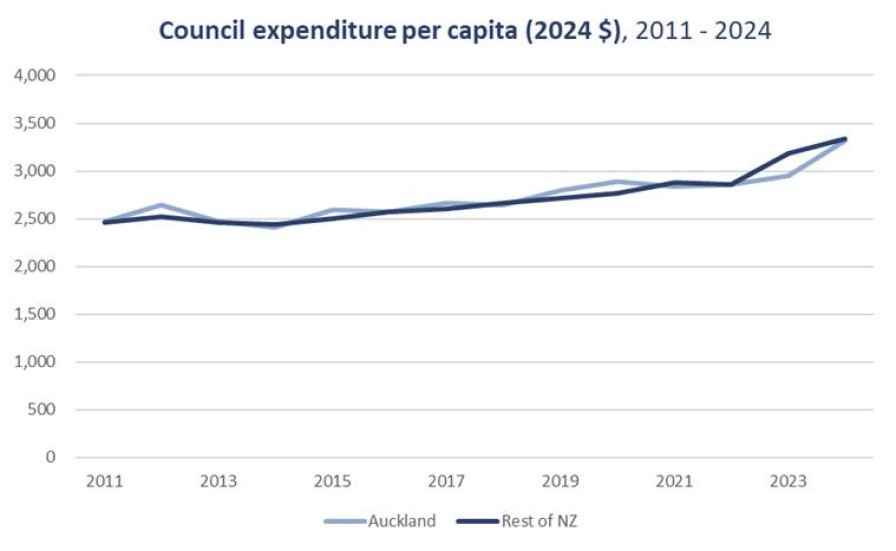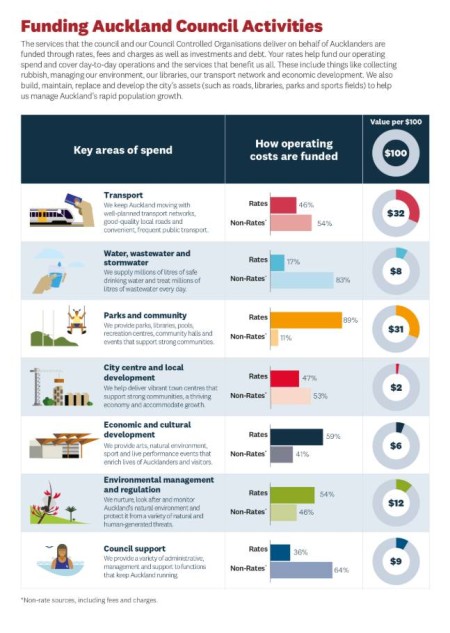Auckland’s supercity: where did the promised savings go?
ANALYSIS: As the debate over amalgamation in other parts of New Zealand re-emerges, Auckland’s experience provides a timely case study.
ANALYSIS: As the debate over amalgamation in other parts of New Zealand re-emerges, Auckland’s experience provides a timely case study.
Fifteen years ago, Aucklanders were told that amalgamation of their local councils into a single ‘supercity’ would deliver efficiency, reduce duplication, and cut costs. The theory was simple: one streamlined council should spend less than eight separate ones.
But, as we look back in 2025, the numbers tell a more sobering story.
Statistics New Zealand’s data shows that, since its formation, the annual operating expenditure of Auckland Council (including its subsidiaries) has increased from $2.7 billion to $6.0b, an increase of more than 120% in 13 years.
With such an increase in spending, it’s little surprise that rates across the region are increasing sharply.
Two of the important drivers of the growth in expenditure have been general inflation and population growth. But adjusting for these two factors, real (ie, inflation-adjusted) per capita spending has increased by 34%. This is an average increase of 2.3% each year in Auckland Council’s real cost to serve its community.
The graph below compares the real level of expenditure per capita for Auckland and the rest of the councils in New Zealand since the supercity was formed. Interestingly, the level of council spending in Auckland was close to the average for all councils across the country at the start of the supercity and the two have tracked each other closely since.

Source: Stats NZ Local Government Financial Statistics.
In the immediate years following amalgamation in 2010, there was a brief dip in real per capita council spending. By 2012, Auckland’s costs per resident had fallen slightly, suggesting efficiencies were being found.
Yet, by 2014, those savings had evaporated. Since then, expenditures have risen steadily, with a particularly sharp increase between 2023 and 2024. Today, Auckland’s real per capita spending remains at almost exactly the same level as the average for the rest of New Zealand councils.
In other words, the supercity, despite being by far the largest council in New Zealand, is not any more efficient than the average council in New Zealand. And, over 15 years of existence, Auckland City has not become any more efficient than the patchwork of smaller councils it replaced.
At the same time, local communities’ voice on matters as simple as the neighbourhood library’s opening times has been weakened, with local boards largely being disempowered.

Rising council costs is not just an Auckland problem.
Local governments’ costs to serve, once adjusted for both population growth and inflation, have been climbing across New Zealand for decades. Whether you live in Auckland or elsewhere, councils are spending significantly more per person than they did in the 1990s. Indeed, between 1996 and 2024, real per capita spending by councils has more than doubled nationwide.
Looking deeper into Auckland Council’s books raises another concern: non-core activities continue to take up a substantial share of spending.
In 2012, a hefty 17% of Auckland Council’s expenditure went into categories such as ‘support services’ and ‘other activities’, rather than core services such as water, roads, or public transport. By 2024, a new category – ‘All other activities’ – accounted for 22% of the budget, the second-highest category after transportation (24%).
Without a more detailed breakdown of these activities, Aucklanders are left guessing as to what exactly they’re paying for. Are these essential services? Discretionary extras? Overheads? Without transparency, it is impossible to know where real savings might be found.
The lesson from Auckland’s supercity experiment is not that amalgamation is necessarily bad. Aucklanders may well point to benefits such as improved transport and city planning. However, it is no silver bullet for ratepayers. Structural reform alone cannot rein in costs if the underlying drivers of local government spending remain unchecked.
Until that happens, promises of cost-cutting through amalgamation should be taken with a grain of salt. Aucklanders were told they’d get a leaner, more-efficient council. Fifteen years on, what they actually have looks a lot like business as usual – just bigger.
There may well be efficiency gains from amalgamating small adjacent councils in New Zealand. And there may be good arguments for merging the network activities of councils that are next to each other – the benefits are likely to include better strategic and spatial planning. But there are also good arguments for keeping decision making on local matters close to the local communities.
As the debate over amalgamation in other parts of New Zealand re-emerges, Auckland’s experience provides a timely case study. The experience suggests it would be wise not to expect much in the way of efficiency gains from merging councils that already have reasonable scale. Bigger is not always better when it comes to local councils.
Philip Barry is a founding director of economics and corporate finance advisers, TDB Advisory, which provides independent strategic advice to private and public-sector entities on amalgamation and restructuring options.
This is supplied content and not commissioned or paid for by NBR.
Sign up to get the latest stories and insights delivered to your inbox – free, every day.